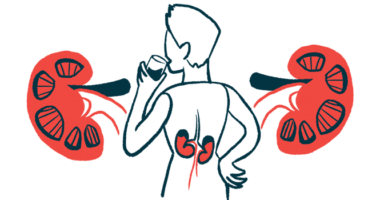Fabrazyme helps ease Fabry disease symptoms in Chinese study
Gb3, lyso-Gb3 fell after 48 weeks; greatest reductions in classic Fabry males

Treatment with Fabrazyme (agalsidase beta) for Fabry disease was safe and tolerated well over about a year, led to reductions in disease-related biomarkers, and eased symptoms in most patients, according to results of a post-marketing surveillance trial in China.
An approved enzyme replacement therapy (ERT) for Fabry disease, treatment with Fabrazym also stabilized kidney function, with better outcomes seen in younger patients. The study did suggest that COVID-19 infection may negatively affect the response to treatment, however.
“These findings underscore the importance of ERT as a key therapeutic approach for managing Fabry disease in China,” the researchers wrote, adding that “future real-world studies with larger sample sizes are needed.” The study, “A phase 4, open-label, multicenter study of the safety and efficacy of agalsidase beta in Chinese patients with Fabry disease,” was published in the Orphanet Journal of Rare Diseases. It was funded by Sanofi, which markets Fabrazyme.
Fabry disease is caused by mutations in the GLA gene that prevent cells from making enough alpha-galactosidase A (alpha-Gal A), an enzyme that normally helps break down the fatty molecule globotriaosylceramide (Gb3). Without the enzyme, Gb3 and related molecules such as lyso-Gb3 accumulate to toxic levels in various organs, most notably the kidneys, leading to a range to symptoms.
Results of Phase 4 testing
ERT has been the standard treatment for Fabry disease since 2001. It involves regularly infusing a functional version of alpha-Gal A into the bloodstream to help clear the fatty molecules. Fabrazyme is the only ERT approved in the U.S. for people with Fabry, aged 2 and older. In China, it’s been approved since 2019 for ages 8 and older. The Chinese health authority did require a post-approval study to assess its safety and efficacy in Chinese patients with Fabry disease.
To address that, Sanofi launched a Phase 4 clinical trial (NCT05054387) that enrolled 22 patients, ages 8 and older, across six hospitals in China. The participants received infusions into a vein at the standard 1 mg/kg dose every two weeks for 48 weeks. The study was conducted between 2021 and 2023 — during the COVID-19 pandemic — but all 22 patients completed the full treatment period even though there were some protocol deviations. Still, half the patients received 80% or more of their planned infusions.
Side effects were reported in all of them, though most were mild or moderate. A COVID-19 infection was the most common one, affecting 63.6% of patients. Only two serious side effects occurred, neither related to treatment.
Treatment-related side effects were reported in eight patients, most commonly infusion-associated reactions that tended to occur early and declined over time. None were serious and no participants discontinued treatment due to side effects.
Compared with before treatment, mean levels of Gb3 and lyso-Gb3 decreased after 48 weeks. These reductions were greater among males with the classic form of Fabry disease, which begins in childhood.
The biomarker reductions were mirrored by clinical outcomes. By the end of treatment, 59.1% reported symptom improvements, while 36.4% were stable. No patients reported worsened symptoms. Kidney function also remained stable overall.
Patients ages 30 or younger had greater reductions in Gb3 and lyso-Gb3, and higher rates of improvement (81.8% vs. 36.4%) than older participants. Kidney function improved slightly in the younger group, but declined in older patients.
Those who were infected with COVID-19 during the study showed worse treatment responses, with smaller reductions in blood Gb3 and lyso-Gb3 and slightly lower rates of improved symptoms. A small decline in kidney function was also observed in this group compared with improvements in non-infected participants. The difference wasn’t statistically significant, however.
“This study marks the first Phase 4 evaluation of ERT for Fabry disease in China, demonstrating that [Fabrazyme] is safe and well tolerated,” the researchers wrote. “The efficacy of [Fabrazyme] aligns with global studies, showing notable reductions in [blood Gb3 and lyso-Gb3] levels, improvement in symptoms, and stabilization of kidney function.”







